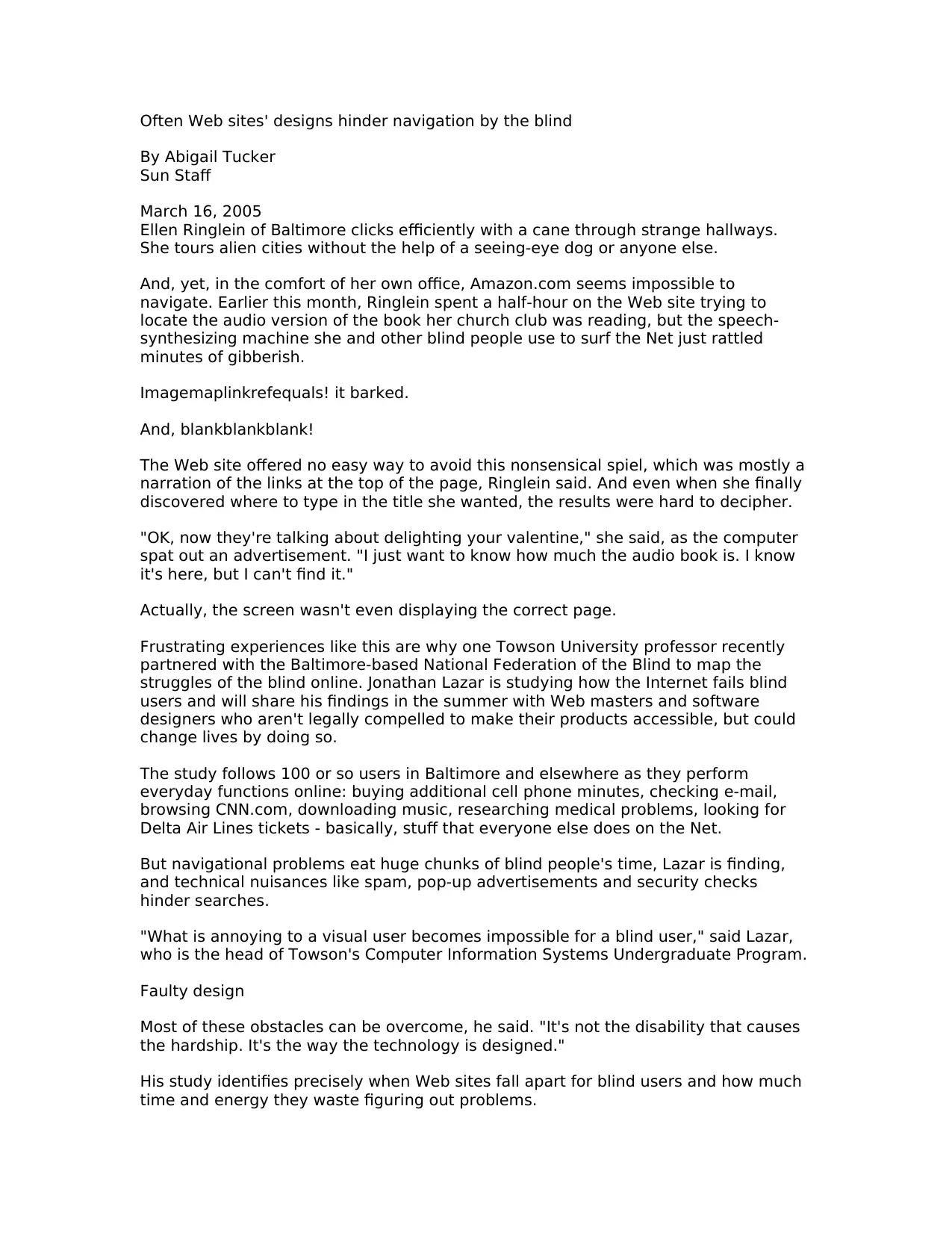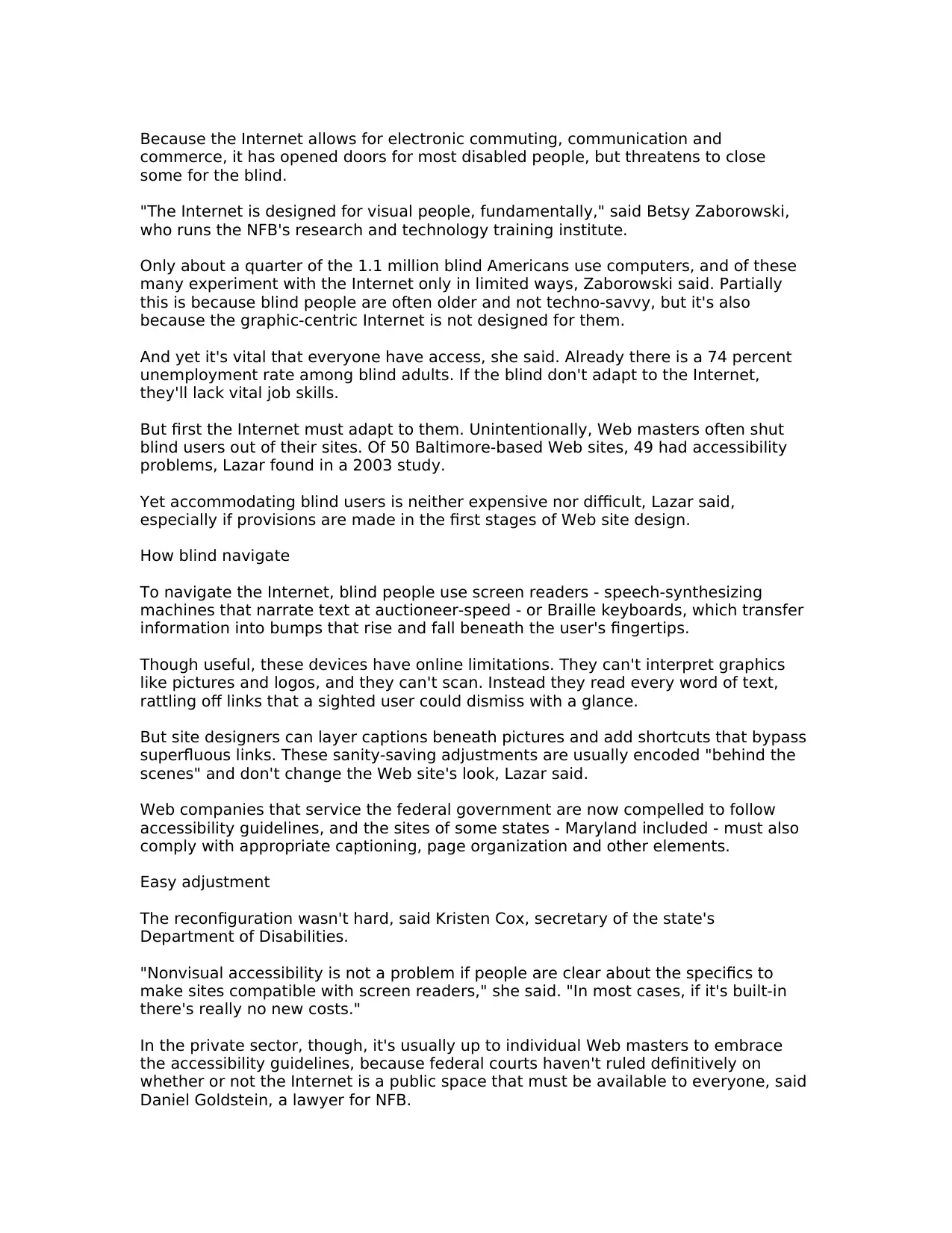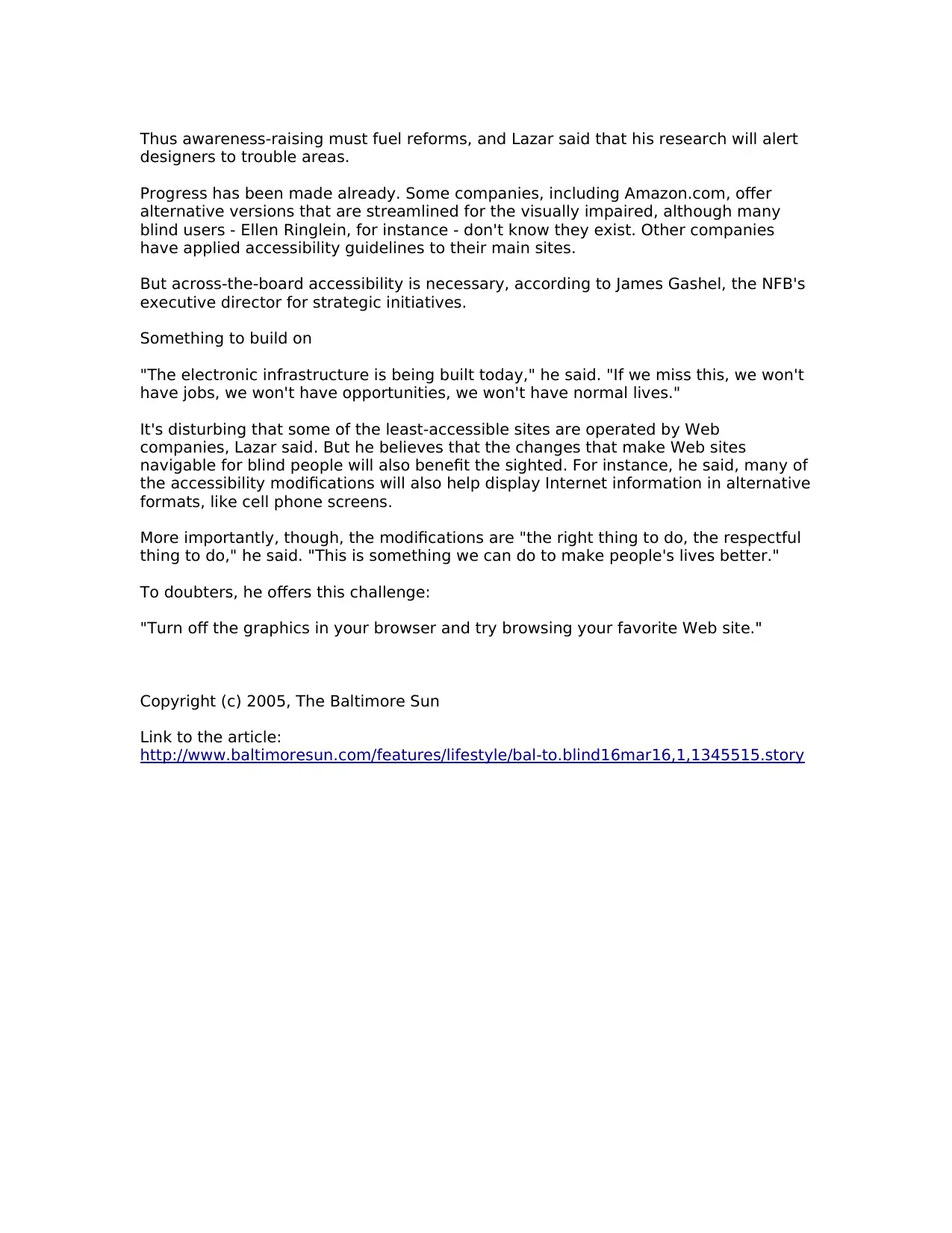A Case Study on Web Design and Navigation Challenges for the Blind
VerifiedAdded on 2019/09/18
|3
|1270
|274
Case Study
AI Summary
This case study examines the difficulties blind individuals face while navigating the internet due to inaccessible web design. It highlights how common website elements, such as image-based links and complex layouts, create significant barriers for users relying on screen readers and other assistive technologies. The study, conducted in partnership with the National Federation of the Blind, assesses the impact of these challenges on everyday online tasks, revealing that even simple activities can become time-consuming and frustrating. The research emphasizes the importance of incorporating accessibility guidelines during the initial stages of web design and suggests practical adjustments, like adding captions to images and providing navigational shortcuts, can greatly improve the online experience for blind users. Furthermore, the study points out that enhancing web accessibility not only benefits the visually impaired but can also improve usability for all users, including those accessing the internet through mobile devices. Desklib offers a wealth of resources, including similar case studies and solved assignments, to aid students in understanding and addressing such critical accessibility issues.
1 out of 3







![[object Object]](/_next/static/media/star-bottom.7253800d.svg)